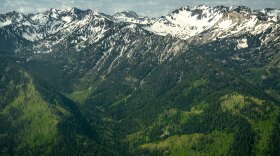-
Centuries after devastating Medieval Europe, the Black Death is targeting Utah prairie dogs. Now, scientists are testing a new way to protect the threatened species before it’s too late.
-
"I was a political casualty," said Ted Cooke, a longtime Arizona water manager. Some policymakers in the Upper Basin quietly expressed concern that he might favor the Lower Basin in negotiations.
-
The Trump administration wants to do away with the Roadless Area Conservation Rule. Established in 2001, it stopped road construction and logging on national forest lands — including four million acres in Utah.
-
A Salt Lake City kid born in 2005 lived through hundreds more days of extreme heat during childhood than one born in 1975, says a new analysis. That’s changing the experience of growing up.
-
The sight of bulldozers leveling part of the popular Zen Trail has heightened concerns about the future of other recreation areas around the fast-growing city.
-
The vote by House Republicans helps clear the way for President Donald Trump’s plans to sharply expand mining and drilling on public lands. The Republican-majority Senate must still approve the House action.
-
Flagstaff, Arizona, became the first ever DarkSky Community in 2001. Central Idaho is home to the only DarkSky Reserve in the U.S. and Utah has the highest concentration of places globally. More towns in Colorado want to join the ranks.
-
After a promising forecast, monsoon rains ghosted Utah for most of the summer. While the recent showers were a welcome relief, they couldn’t help the state climb out of its precipitation deficit.
-
The U.S. Supreme Court will allow the Trump administration to cut nearly $800 million in NIH research funding for projects that relate to DEI topics. Utah researchers worry about what that means for the progress of health science in the state.
-
In the past, the Wildlife Rehabilitation Center of Northern Utah has typically been able to estimate how many patients will come in. But when the weather swings too far in any direction, it’s hard to buy the right amount of supplies.
-
Utah’s reservoirs are at 67% capacity, but some people are tuning out the message to save water.
-
Several environmental groups want the federal government to curb water waste in the Lower Basin states of California, Arizona and Nevada.
-
Millions of people visit Utah’s national parks for their awe-inspiring views, but air pollution often gets in the way. Federal moves to reverse emission-cutting policies could put the parks’ air even more at risk.
-
The move by the Colorado River Indian Tribes in Arizona and California would give rights of nature to the water, marking a historic first.














